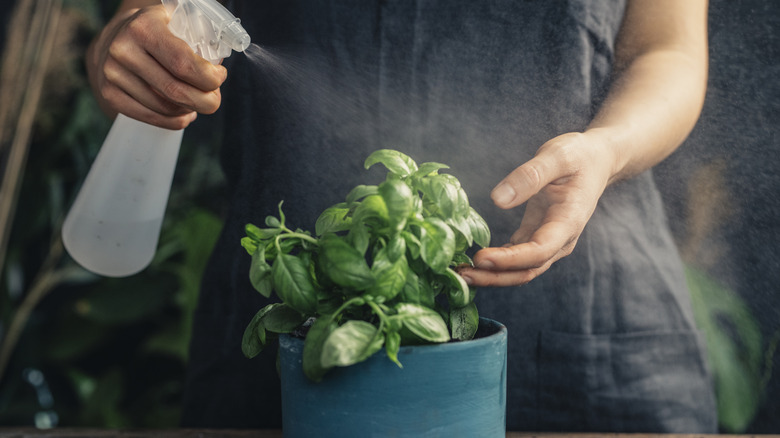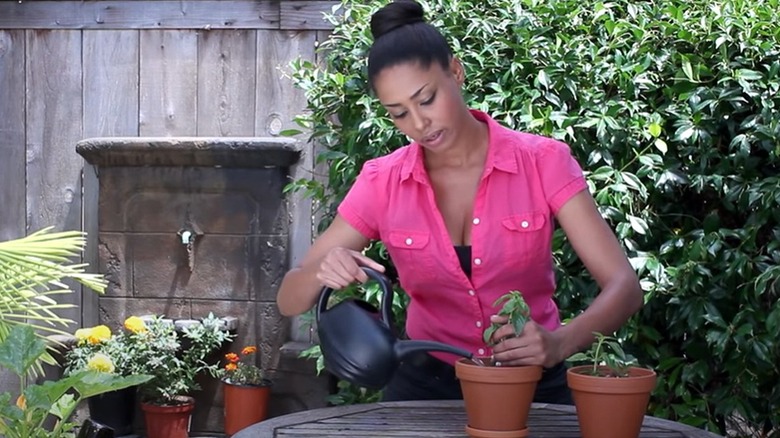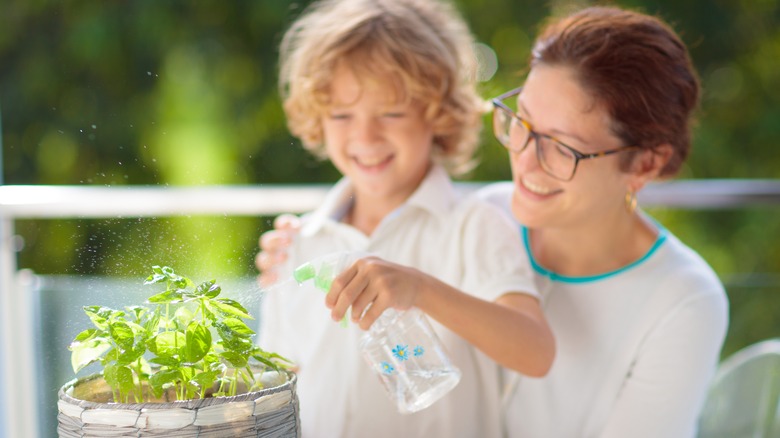The Best Method For Watering Your Basil Plants
If you're planning to grow basil plants, watering them properly is a key part of their existence. A hardy, annual herb, basil typically flourishes in warm, sunny climates, however, they require the right amount of water to remain abundant and fresh. So what's the best method for watering your basil plants? While the delightful, culinary herb loves rich, well-drained soil, it's important to maintain an accurate level of hydration. Depending on your location and the placement of your plant, you can establish a routine that may help to avoid the soil from getting either too dried out or overly saturated.
With several types of basil plants to choose from, most varieties will benefit from consistent replenishment. Whether planted in the garden or potted (indoors or out), there are some factors to consider within your watering cycle. A successful approach may include the frequency, the time of day, and the actual act of watering the savory herbs. While a basil plant can soak up 6 to 8 hours of sun, being attentive to its moisture level is crucial to its vitality, especially during hot, dry months. Wherever you decide to plant your basil plants, developing a watering plan will provide them with sustainable growth.
Water your basil consistently
Since basil plants require adequate water intake, there are several different ways to water them. For best results, your basil plant should always be in a well-draining pot or container. To prevent the growth of fungus, hydrate your basil at the base of the stem (or the top level of soil) without drenching the leaves. Gently hold the stems together while safeguarding the leaves, then give your plant a deep soak with a hose or preferred watering can. In addition, allow the liquid to drain through without the presence of a dish or saucer. If left to puddle, soggy soil may lead to its deterioration. Look for brown or yellowish leaves for signs of overwatering. If your plant is under-watered, the leaves will appear shriveled.
Another approach might be to lightly mist your basil plants. Being such a versatile herb, basil also has the ability to take in moisture through the air. If you grow your variety indoors or live in an arid climate, misting is an additional option to help keep them hydrated. Whatever your area's conditions, be consistent with a watering practice, as well-established basil plants can thrive for up to a year or more. Even though they come with some observance, finding the proper balance of water will give your basil a flavorful life.
Hydrate your basil in the morning
You can give your delectable herbs up to an inch of water each week to maintain a healthy status. Watering them in the morning is best. While basil leaves are prone to fungal diseases when they become exceedingly damp, watering them late in the day or at night won't offer them enough time to dry out. Additionally, giving your basil refreshment at daybreak ensures a wet foundation for the warm hours ahead without getting dehydrated. The same method applies to basil planted in the ground. While you might incorporate mulch or other clippings for added retention, feel out the texture to determine how much water may be necessary.
Depending on the time of year, outdoor potted basil may need more watering compared to your indoor plants. Lengthened sun exposure and raised temperatures are expected during summertime, which may require giving your basil frequent waterings. During the cooler months, you can ease it back to once a week. Unless it rains, no worries, however, with rainy seasons that can occur, keep your basil from becoming overwatered with a protective covering or bring them inside. Indoor potted basil plants love the warmth of a sunny windowsill and can receive a drink more periodically. If you just planted seeds, they also need protection from heavy rainfall.


